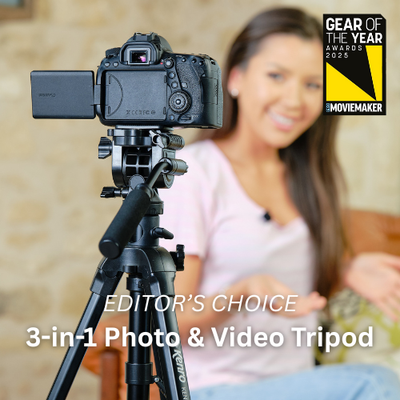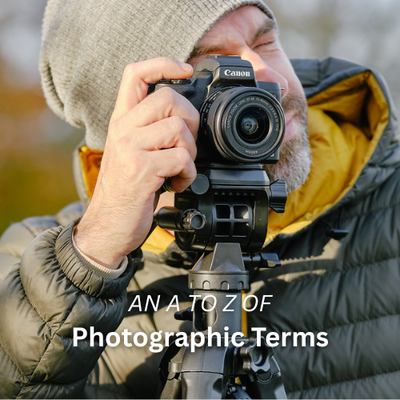Smartphones have become more than just communication devices. They are now powerful and convenient tools for capturing life’s most memorable moments. Whether you wish to capture cherished family moments, snap photos of breath taking landscapes, or take a flattering selfie, smartphones have made photography more accessible than ever. However, you may not be using your phone to its full potential for capturing really great images.
Great smartphone photography isn’t just about having the latest phone model, it’s also about understanding key elements of photography such as composition, lighting, and the little tricks that can elevate an ordinary shot into something truly stunning. Whether you’re an aspiring content creator, or just love taking pictures, we’re here to help you capture high-quality images in a flash using just your smartphone. Keep reading as we dive into the top tips for smartphone photography, from mastering lighting techniques to understanding your settings and editing like a pro.
How to take good photos with a phone
Taking great photos with your phone is way easier than it seems. With the exceptional specifications of most modern smartphone cameras, producing a high-quality image with your phone is completely achievable when you master the settings and editing process. There are a few key components that go into taking the perfect picture with your phone, which we have listed below.
Plan out your shot
Just like with a conventional camera, having an idea of the image you want to capture will help you create a quality image. It will allow you time to adjust your settings accordingly, making sure the composition and lighting are perfect. Consider the format you are taking images in - do you want a natural, upright shot, or a cinematic, horizontal one?
Although smartphones make it easy to take multiple photos at once, it's important to consider your phone’s storage capacity. Unlike a conventional camera where you can switch out memory cards throughout shoots, your phone may only have a certain amount of space available, therefore you must be smart about the shots you are planning.
Think about lighting
Getting the lighting right is key to capturing the perfect image. All smartphones have very bright lenses, built-in flash and the option for special lighting modes like ‘night mode’ that help cameras adjust to varying lighting labels. Despite this, there are also additional options to illuminate your shots with ring lights or compact LED lights that can be attached to your smartphone.
Smartphone ring lights, such as the Kenro Smart Lite Compact LED Light and Kenro Smart Lite RGB Compact LED COB Light, are a great option for those who want continuous lighting for shooting social media content, specifically close-ups for beauty shots. These lights are easy to set up and take with you on the go and are compatible with our range of mini tripods to help you create a convenient and effective lighting set-up. If artificial lighting isn’t the right fit for the type of image you’re trying to take, remember that your phone will have settings that you can adjust to play with different lighting levels.


Kenro Smart Lite Bi-Colour Compact LED Video Light and Kenro Smart Lite RGB Compact LED COB Light

Keep things steady
Smartphones are incredibly lightweight and thin compared to most traditional cameras. While this makes them portable, it also makes it harder to keep them steady when taking photos. Even if you try to keep your phone still, images can still turn out blurry. Investing in quality smartphone accessories can help improve stability.
From tripods to smartphone rigs, there are many dedicated mobile photography accessories out there now that can aid you in taking a stable photograph. A tripod such as the Kenro Smart Lite 7" Mini Tripod can provide you with a sturdy grip whilst you take video or photo content, and it’s easily portable so you can take it wherever you go.

Kenro Smart Lite 7" Mini Tripod
Get the settings right
Just like with a traditional camera, adjusting the settings correctly is key to capturing great images. All smartphone cameras will have different settings depending on the make, model and software version you currently have, however, the main two settings you should have right are exposure and focus. Although most phones have automatic exposure and focus settings, to be in more control of the shot you are taking you should change the settings to manual. To do this, most phones will have an AE/AF lock button that you can activate, which will give you control over the conditions of the image.
Android phones have a Pro mode inside the camera app that lets you adjust shutter speed, ISO, and turn on Raw capture. The iPhone camera app is more limited but allows you to adjust exposure, resolution and lens correction. Both types of smartphones also have the option for portrait mode which blurs the background, and night mode which enhances photos in dim lighting.
The most basic adjustment you can make with your smartphone camera is exposure, which allows you to brighten or darken a scene. If you use this effectively you can turn a simple image into something spectacular. On an iPhone, you will be able to adjust this by dragging down the small sun icon that appears on the screen when taking an image. On an Android, this may appear as a more traditional +/- icon.
Read more about the best settings for your smartphone camera below to ensure you get the perfect shot every time.
What are the best settings for smartphone photography?
The best settings for your smartphone camera will depend on the type of smartphone you have as well as the type of picture you want to capture. However, generally speaking, the settings you should enable to capture the best picture day-to-day include:
-
HDR (High Dynamic Range) - Enabling HDR helps your camera adjust to high-contrast scenes, such as bright skies and dark shadows
-
Gridlines - Turn on the rule-of-thirds grid in your settings to help you compose the perfect shot every time
-
High Resolution - Always shoot images at the highest resolution possible, and avoid using compressed formats to maintain the quality of your images
-
Aspect Ratio - For maximum detail set your camera to a 4:3 aspect ratio for a full image, or if you want a more cinematic look a 16:9 ratio for a wide crop image
-
Night Mode - If you’re shooting at night or in dark areas, enabling night mode will help enhance details in dark conditions without overexposing highlights.
There are of course many other settings in your smartphone camera that you can change depending on the type of image you want to take, such as portrait mode, ultra-wide lens, and macro mode, which will all produce different aesthetics. Play around with your settings and try out different modes so you can find which works best for your smartphone photography needs.
What are the best photo editing apps for mobile?
When editing smartphone photos, there are many ways to adjust images depending on the desired result. As well as the built-in editing features on Google Photos (for Android users) and Apple Photos (for iPhone users) that all have basic editing capabilities such as adjusting brightness, contrast, sharpness, etc., there are third-party apps you can use that allow you to edit the image even further. Some of the best smartphone photo editing apps include:
-
Adobe Lightroom Mobile: This mobile version of Lightroom is the most powerful photo editor as it has professional-grade features that allow you to make extensive adjustments to your images from the convenience of your smartphone
-
VSCO: This is one of the most popular photo editing apps for mobile that allows you to pick from many curated filters with aesthetic appeal and create your own filters, making it perfect for sharing images to social media platforms
-
Snapseed: This is great for beginners looking for an easy-to-use editing app that has a good balance of basic and advanced editing tools as well as the option to add filters if needed
-
Canva: If you’re looking for an app that allows you to push the boundaries of photography then Canva is perfect for aiding your creativity. With the basic editing options as well as the ability to crop and adjust the photo to fit various platforms, Canva also has many options to layer images, adjust transparency, add text and other unique elements.
Capture the perfect image with your phone
Want to take incredible smartphone photos? We’ve got the accessories you need to capture life’s best moments with ease. Browse through our full range of photography equipment to find everything you need to snap the perfect picture every time.



